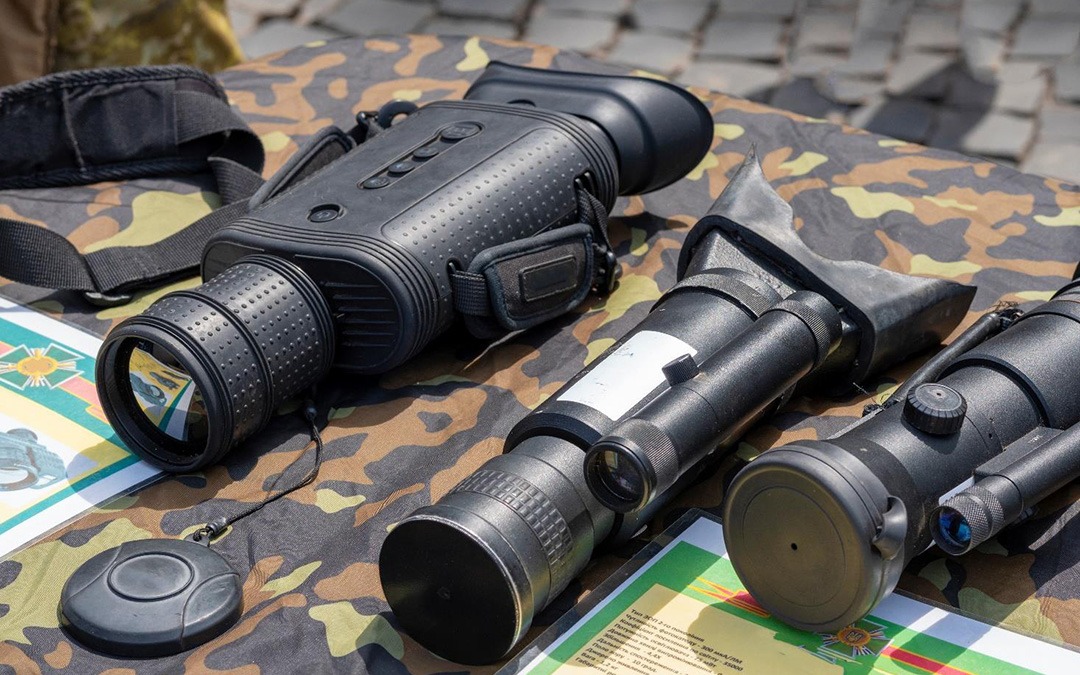10 tips for designing tough plastic products for harsh environments
Posted by Ben Mazur 24.10.2019
How to design rugged products
- Make everything thicker and reinforce with extra strengthening ribs
- Select appropriate materials, polycarbonate, ABS, glass filled plastics, and metals are good choices
- Rubber over-moulding and exterior cushioning will add extra protection
- Test thoroughly in all conditions

Ben Mazur
Managing Director
Sometimes when designing products which need to work in the great outdoors, we run into a new set of environmental factors and performance requirements. This is especially true when designing products and devices for military, security and defence applications where the environment can be very demanding and the users expect total reliability. When designing products and devices for harsh environments there are some simple steps you can take to build devices which are a lot tougher and can withstand rough treatment.
You might also like How to select a manufacturer for your product
Understanding harsh environments
The best approach is to first visualise the worst environmental conditions your device could be exposed to, consider this list:
- Repeated drops and impacts
- Compressive forces from any side
- Dragging and abrasion against hard surfaces
- High velocity dust and sand
- Excessive humidity and total submersion
- Oil, acid and corrosive spills
- Sustained vibration
- Extremes of temperature and freeze/thaw
- Extremes of pressure
- Explosive environments
Imagine an environment that is cycling through these conditions repeatedly and in different combinations. Picture your product in the bottom of a dinghy, getting kicked and trodden on and sat in salty water. Now picture it in the back of a lorry for days in 50 degree heat, surrounded by dust and sand and subject to continuous vibration. These conditions are sufficient to damage or destroy many consumer products very quickly.
Let’s look at some design features we can add in to combat these harsh conditions.
How to design rugged products for harsh environments
1. Thicken up the walls
Normally a wall thickness of 1.5mm – 3mm is appropriate for general, plastic products. When designing products which need to withstand harsh environments and survive big impacts consider increasing wall thicknesses to 4mm – 6mm. This will increase rigidity and strength and will make walls less likely to break with impacts and compression, especially at lower temperatures where plastics become more brittle.
2. Add more ribs
Increasing the number of ribs will make your product more rigid and flex less under compression and impact. Add plenty of ribs across internal faces of the casework and blend them into the side walls on all sides. Maximise rib thickness and use the rule of thumb; rib thickness = 2/3rds of wall thickness.
3. Reinforce bosses
Shocks can cause bosses to break at their bases where they meet the wall. If a boss breaks away from the wall then the casework will be compromised and dust and moisture may enter, or it may break apart completely. Use large fillets to blend bosses into the walls and spread impact energy more widely. Also add extra ribs around bosses and connect them up to other ribs in the casework to increase rigidity and spread impact forces more evenly.
4. Select tough plastics
Polycarbonate-ABS alloy is a good choice because it combines the toughness, temperature resistance and impact strength of Polycarbonate with the flexibility and chemical resistance of ABS. Polycarbonate on its own is very hard and is used to make helmets, visors and bulletproof glass, it is a great choice for lenses and windows. Glass filled polypropylene is also a popular choice for ruggedised products due to its low friction, high rigidity, mechanical strength and excellent resistance to chemicals and abrasion.
5. Use metal for extra toughness
Consider reinforcing or even replacing plastic components with metal ones. Form threads with metal inserts and use metal pins for hinges. Plastic can be moulded over metals such as steel to provide stiff, lightweight, longer lasting parts which are impervious to rust and corrosion. Metals such as aluminium and titanium can have their surfaces hardened significantly by anodisation and used to form outer casework which is hard, lightweight and corrosion resistant.
6. Spec seals correctly
Sealing can be achieved in many ways, the most common solution being gaskets and o-rings. For both methods, surface finish is critical as it will ensure the material fully engages with the mating surface. A Ra of 0.8 – 3.2μm is generally recommended but this figure will depend on the shore hardness of the seal itself. Seals are available in a wide variety of materials such as nitrile rubber, silicone, FKM and Chloroprene. Each of these materials has their own benefit such as chemical resistance, operating temperature or shore hardness, so its important to choose the correct one for your application.
There are several failure modes to look out for with o-rings, specifically abrasion, compression set and installation damage. Ensuring the geometry and tolerances are correct on the part will help avoid this, ensuring there is a 20° chamfer on the part and using parkers o-ring guide will help mitigate seal failure. In addition, using the correct lubricant is important, for example, whilst silicone grease complements natural rubbers, it is not suitable for silicone o-rings and PTFE grease should be used instead.
7. Add exterior cushioning
Adding exterior ridges and cushioning and even rubberising the whole exterior will help dissipate energy from sudden impacts and spread it around the whole shell of the product. It can also help make it more rigid when compressed and more robust when dragged. The cushioning can be any material and will depend on the specific environment but it should form protrusions on the edges, corners and exposed faces of the casework.
8. Design for vibration
Over a relatively short period of continuous vibration bolts and screws can loosen which can have very bad consequences. The way to avoid this from happening is to use nylon locking nuts and/or locking washers and thread lock. Also ensure inaccessible, internal components such as SD cards, wired connectors and batteries are secured in place by internal walls so they cannot come loose with vibration.
9. Avoid adhesives
Don’t use adhesives or adhesive pads internally or externally. Over time, flexing, vibration, dust, thermal fluctuations, humidity and impacts can wear out adhesive joints and cause them to fail. Consider using screws, bolts, ribs, bosses and cable ties to secure things in place.
10. Chose colour carefully
Colour can be very application specific however, think twice about making it black. If it is going into a hot environment black and dark coloured objects can get extremely hot. Not only can this be bad for the device and it’s components, it can also make them difficult to use, especially if they are handheld.
Further reading
For further information and standards relating to designing tough products consider:
IP ratings – ingress protection to liquids and solid particles
Nema ratings – defines the types of environments in which devices can be used
MIL-STD-810G – a series of tests designed by the U.S military to test its equipment limits in various conditions where it is expected to be used
IK rating – measure of protection against mechanical impacts
At Ignitec we have a expertise in developing products, devices and instrumentation for harsh environments. If you have a requirement you would like to discuss or would like some advice or guidance please get in touch.




